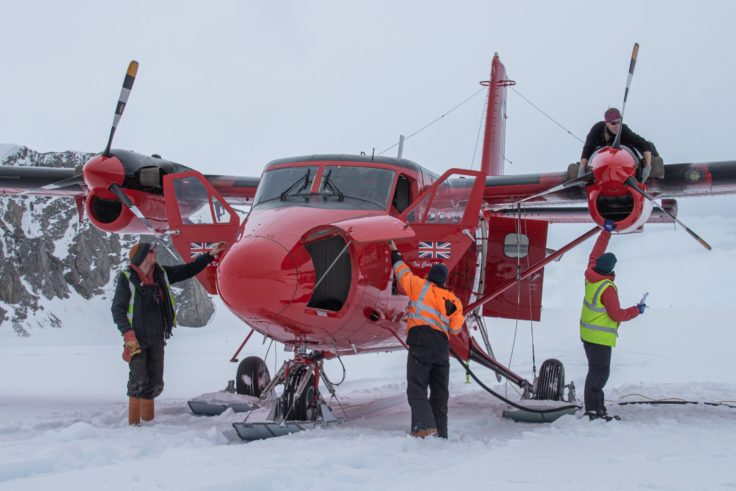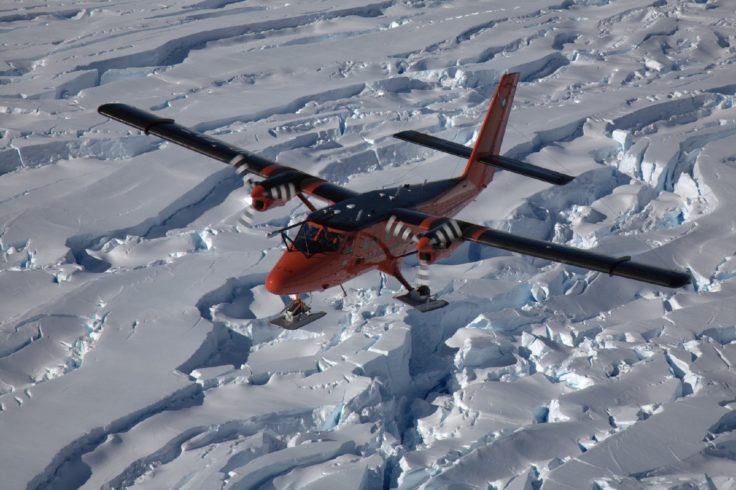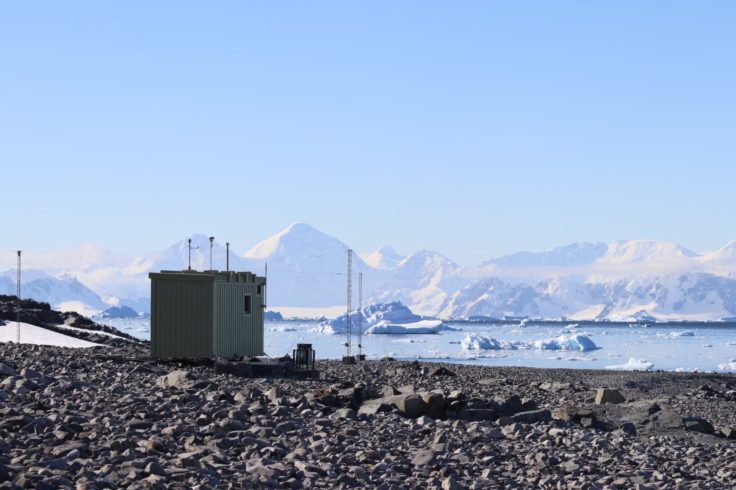A team of scientists are currently conducting a major experiment over the Southern Ocean that will help to improve climate modelling.
The Southern Ocean Clouds project team are performing several flights from British Antarctic Survey’s (BAS) Rothera Research Station over the Southern Ocean. A Twin Otter aircraft will be equipped with instruments that will measure aerosol (dust suspended in the atmosphere) cloud droplets and crystals directly inside the clouds. This will enable us to understand the processes taking place inside the clouds. The mission also plans to coordinate some flights with a Spanish research vessel, which is taking similar measurements near the Antarctic Peninsula. Data collected will enable researchers to better model how clouds affect climate change.

As the climate changes due to the rise in greenhouse gas concentrations, so does the urgency to increase the accuracy of future climate projections. There is still a large uncertainty in the prediction of future temperature rise. This is important for bodies such as the Intergovernmental Panel on Climate Change, who need to offer precise guidance to policymakers on the impact of changes to emissions from human activity.
Some of the major uncertainties within climate models are due to aerosols, which act as nuclei for cloud particles to form on. Scientists hope that by improving our understanding of the key processes involved in cloud formation and development, we can refine their representation in climate models – ultimately reducing that level of uncertainty.
The Southern Ocean is an area where biases in climate model representations of surface radiation and sea surface temperature are larger than anywhere else. This is thought to be as a direct result of the way clouds are represented within these models. This has a knock-on impact for modelling other processes in the region, such as large scale oceanic and atmospheric circulations or even changes in Antarctic ice sheets.

BAS scientists are leading the Southern Ocean Clouds project along with scientists from University of Manchester, University of East Anglia, University of Exeter and Cranfield University. The project focuses on mixed phase clouds (MPCs) at these high latitudes. The current representations of MPCs are believed to be the source of the biases in climate models.
MPCs are made of liquid droplets and ice crystals, which form on aerosols acting as cloud condensation nuclei or as ice nucleating particles. The proportions and distribution of these particles affect the lifetime of the clouds and their cooling or warming effects.
Scientists will be able to study MPCs forming in the relatively pristine environment of the Southern Ocean and Antarctica. This will help improve understanding of what the natural formation process looks like, painting a clearer picture of the impact of human activity.
Dr Tom Lachlan-Cope, one of the team involved in the flying campaign says:
“Time is of the essence for the global community to take decisive action on climate change but our understanding of the processes that drive climate change, particularly at high latitudes is poor. This research should offer essential updates to our understanding of high latitude cloud processes, and of course the accuracy of climate models that rely on that knowledge.”

The flying campaign is the exciting high point in a series of measurements taking place in the Southern Ocean over a variety of spatio-temporal scales, and from land, ship and aircraft. In 2022, the team installed a suite of instruments at the Rothera Research Station – one of the first studies of physical and chemical properties of aerosol in Antarctica all year round in the long term.
Dr Floortje Van Den Heuvel, who’s the CloudSense science coordinator, and is on the flights, says:
“Cloud and aerosols are responsible for some of the largest uncertainties within climate models – the CloudSense programme aims to reduce these.”
The Southern Ocean Clouds project is part of CloudSense, a programme of work that aims to improve climate models globally by reducing the uncertainty in climate sensitivity due to clouds.
CloudSense
CloudSense aims to utilise the combined expertise of climate modellers, cloud physicists, and remote sensing experts to stimulate the scientific advances needed for a reduction in uncertainty in climate sensitivity due to clouds. The Uncertainty in Climate Sensitivity due to Clouds (CloudSense) is a 5 year research programme, funded by the Natural Environment Research Council (NERC).
CloudSense consists of four projects: Circulates, DCMEX, M-Phase and SOC.
CloudSense is managed by the Programme Coordination Team (PCT), which includes the Project Leads (PLs) of the four projects within CloudSense, and is managed by British Antarctic Survey.
